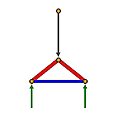
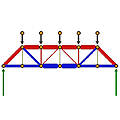
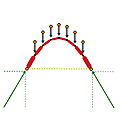
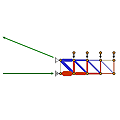
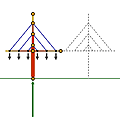

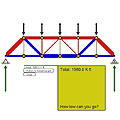
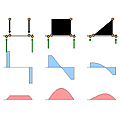








Introduction
The purpose of these interactive demonstrations is to help you develop a thorough understanding of basic principles of structural behavior, and to provide you with tools and knowledge that will help you to design structures that are efficient and elegant.
Before you begin, you should have some familiarity with the rudiments of graphic statics. These can be learned from Zalewski and Allen, Shaping Structures: Statics (New York, John Wiley & Sons, 1998, ISBN 0-471-16968-4), and from the companion CD-ROM lessons in graphic statics by Joseph Iano (New York, John Wiley & Sons, 1998, ISBN 0-471-28338-X).
For best viewing, the screen settings on you computer should be 1024 by 768 or greater.
Single-click on any icon in the left-hand column to start that demonstration. It will take a few moments to come up. If you have a popup blocker on, you must turn it off because the demos come up in their own popup windows when clicked.
Spend time playing with each of the demonstrations.
You’ll often discover things that are not mentioned in this manual. You may
also wish to use one or more of the demos as tools to help you design a structure
that you’re working on. And if you develop something of interest as a result,
please tell us about it. You can reach us by e-mail at [email protected].
The Origins of These Demonstrations
These interactive demonstrations were conceived and programmed by Simon Greenwold. When Simon was a graduate student in architecture at M.I.T., he took a beginning structures class in which he learned graphic statics from the textbook by Zalewski and Allen entitled Shaping Structures: Statics. Drawing on his previous experiences as an undergraduate math major, teacher of high school geometry, and computer programmer, he created the first version of these demos as a tool for presenting his final project in the class. Subsequently, while doing graduate work in M.I.T.’s Media Lab, he completely reworked, expanded, and enhanced the demos, working closely with Waclaw Zalewski and Edward Allen, to produce the product that you see on your screen.